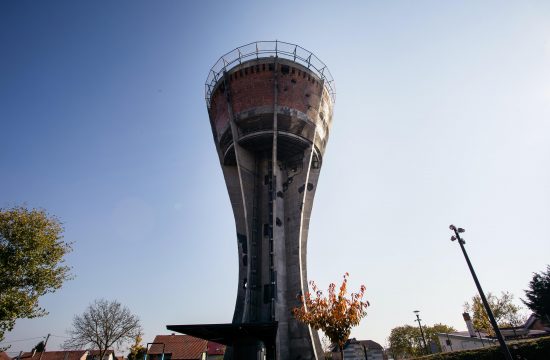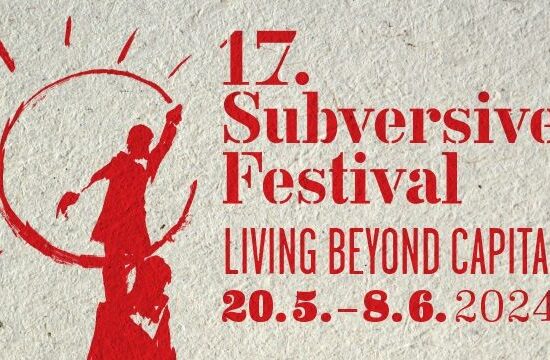There aren't many venues like the Venice Giardini. Sat on the eastern edge of the historic city, the garden is home to dozens of pavilions built over the years to display the work of nations participating in the Venice Biennale -- arguably the world's most important gathering of contemporary art.
If you’re visiting for the first time, it can seem surreal. One moment, you’re outside the Italianate-style British pavilion, built at the height of empire in 1909. Next, you’re poking around the modest Finnish pavilion, a mid-century pre-fabricated box designed by celebrated architect Alvar Aalto.
There are 30 permanent pavilions in the Venice Giardini offering, at the very least, a crash course in 20th-century Western architecture and its associated ideologies. Those newer national participants without a permanent space must jostle to rent smaller, and sometimes hard-to-find, venues around the city.
Which is to say that at every Biennale, politics, history and a healthy dose of national rivalry hang heavy in the air. And that’s all before you’ve seen a single work of art.
While some dismiss the pavilion setup as an outdated anomaly, this year’s exhibits show that it can still provoke a telling range of responses. Following the launch of the Venice Biennale’s 58th edition last week, we look at some of the most interesting.
The new pavilion
Since the turn of the century, this historically Eurocentric event has drawn an increasing number of countries from across continents. But Africa remains conspicuously under-represented. Of the 87 nations participating this year, just eight are from Africa, and of those, only Egypt and South Africa have a permanent place.
So, it was gratifying to hear that the most commonly asked question during preview week was “Where’s Ghana?”
Designed by the preeminent British-Ghanaian architect David Adjaye and curated by filmmaker Nana Oforiatta Ayim (with strategic support from the late Okwui Enwezor, the first African to curate the Biennale in 2015), the inaugural Ghana pavilion is an opening statement of considerable force.
Named “Ghana Freedom,” after the E.T Mensah song celebrating independence from British colonial rule in 1957, the pavilion explores the “legacies and trajectories of that freedom” through the work of six artists spanning three generations, according to the exhibition notes.
Some of them, like sculptor El Anatsui — whose shimmering gold tapestry, made from broken bottle-tops, hangs across an entire wall — are already giant figures on the global art stage. Others are less well-known, like Felicia Abban, considered Ghana’s first professional female photographer, whose black and white studio portraits of 1960s women will surely attract new recognition for her work.
Adjaye’s interlocking elliptical walls are finished with soil imported from Ghana, referencing, he said, the mud huts found in Sirigu, a village in the country’s Upper East Region.
As a whole, the pavilion offers a tactile, coherent expression of Ghana’s past, present and future — one that acknowledges the country’s experience with colonialism but is not defined by it.
“The colonial is not the center of our history,” said Oforiatta Ayim. “We have a long, long history that precedes colonialism, and we’ll have a long future that proceeds it.”
The protest pavilion
For many artists, the Venice Biennale provides an opportunity to critique their country’s political record before a captive international audience.
One of the most notorious examples from the event’s history happened in 1993, when German artist Hans Haacke smashed the floor of his country’s Nazi-era pavilion, inviting visitors to walk through the rubble beneath ominous, wall-mounted letters spelling out “Germania.”
More recently, in a 2013 exhibit named “English Magic,” artist Jeremy Deller took aim at the British establishment, producing a series of works lampooning everything from the royal family and Tony Blair to Range Rovers.
This year’s most interesting show of defiance comes from the Brazilian pavilion, whose double-screen video installation “Swinguerra” is, in part, a flamboyant response to the homophobic, racist rhetoric of the country’s far-right President Jair Bolsonaro.
With a name that fuses a grassroots dance movement from northeast Brazil, swingueira, with the the Portuguese word for war, “guerra,” the video presents a mostly black, non-binary group of dancers rehearsing routines on a disused basketball court.
The artists behind it — long-time collaborators Bárbara Wagner and Benjamin de Burca — capture the commitment, competitiveness and creative flair of the performers.
It is, on the surface, an uplifting celebration of a little-known dance phenomenon. But, of course, there’s more to it.
“Our works are really looking at expressions of popular culture that are very, very closely connected to forms of survival and resistance,” said Wagner, spelling out the grave circumstances faced by the performers in a country where rates of violence against lesbians, gays, bisexuals and transgender people are notoriously high.
The friendship pavilion
What high-cultured, global gathering of nations would be complete without the artful (or otherwise) exercise of soft power?
The Venice Biennale provides a natural platform for countries — especially former colonizers, plunderers and aggressors — to make symbolic amends for past wrongs.
This year, for instance, the Finland’s pavilion focuses on the experience of its native but often marginalized Sámi people.
Opposite the it, the Dutch pavilion exhibits work by artists of Surinamese origin (Suriname was a colony of the Netherlands until 1975), including Iris Kensmil, whose large portraits of dark-skinned women hold the viewer’s gaze while drawing on the traditions of utopian black feminism.
But the most fully realized effort comes from Canada which, for the first time, is showing Inuit art in Venice.
Produced by the Isuma artist collective, the exhibition’s primary focus is a suspenseful film by one of the group’s co-founders, Zacharias Kunuk, called “One Day in the Life of Noah Piugattuk.” Shot on Baffin Island in Nunavut, Canada’s most northerly territory, it recreates the story of a 1961 encounter that resulted in an Inuit family being forced off land by a Canadian official known only as Boss Man.
The post-national pavilion
“In an ideal world, we wouldn’t have national barriers,” said Turner Prize-winning artist Laure Provoust, who’s responsible for the French pavilion. “We’d all float around and be part of the same thing.”
At the heart of her enormously popular show (there were two-hour lines to get in at one point) is a 20-minute stream-of-consciousness film, shot mainly on an iPhone, that charts her journey from Paris to the Venice Biennale itself. It’s a trippy voyage told from multiple perspectives, jumping between badly translated English and French, with moments of Arabic, Italian and Dutch.
Provoust invites us to question the way we define ourselves with reference to place, language and imaginary borders — or, in other words, nations. (In the spirit of breaking barriers, she also claimed to be digging an underground tunnel between the French and British pavilions as a side project).
This might seem at odds with the idea of a national pavilion, but, according to president of the Venice Biennale, Paolo Baratta, that is precisely the point.
“We know very well that the geography of artists is completely different from the geography of states and nations, she said.
“And that art belongs to humanity.”




